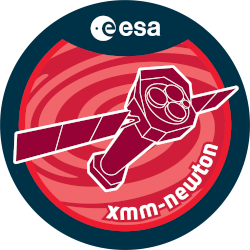

| Proposal ID | 020689 |
| Title | SPECTRAL EVOLUTION OF THE BEST STUDIED ULXS IN IC342 |
| Download Data Associated to the proposal | https://nxsa.esac.esa.int/nxsa-sl/servlet/data-action-aio?obsno=0206890101 |
| DOI | https://doi.org/10.5270/esa-kkqc80b |
| Principal Investigator, PI | Dr AYA KUBOTA |
| Abstract | Ultra-Luminous X-ray sources (ULXs) may represent 30-100 solar-mass accretingblack holes -- extremely important if true, but highly controversial. We proposehere multiple XMM-Newton observations of the nearby spiral galaxy IC~342, whichharbors two of the most luminous and best studied ULXs, in order to characterizehow the ULX spectra evolve as a function of luminosity. Comparing this with thebehavior of the stellar mass accreting black holes in our Galaxy will establish(or refute) the high mass black hole scenario for ULX. |
| Publications |
|
| Instrument | EMOS1, EMOS2, EPN, OM, RGS1, RGS2 |
| Temporal Coverage | 2004-02-20T06:30:24Z/2005-02-11T00:04:17Z |
| Version | 17.56_20190403_1200 |
| Mission Description | The European Space Agencys (ESA) X-ray Multi-Mirror Mission (XMM-Newton) was launched by an Ariane 504 on December 10th 1999. XMM-Newton is ESAs second cornerstone of the Horizon 2000 Science Programme. It carries 3 high throughput X-ray telescopes with an unprecedented effective area, and an optical monitor, the first flown on a X-ray observatory. The large collecting area and ability to make long uninterrupted exposures provide highly sensitive observations. Since Earths atmosphere blocks out all X-rays, only a telescope in space can detect and study celestial X-ray sources. The XMM-Newton mission is helping scientists to solve a number of cosmic mysteries, ranging from the enigmatic black holes to the origins of the Universe itself. Observing time on XMM-Newton is being made available to the scientific community, applying for observational periods on a competitive basis. |
| Creator Contact | https://www.cosmos.esa.int/web/xmm-newton/xmm-newton-helpdesk |
| Date Published | 2006-03-10T00:00:00Z |
| Last Update | 2025-08-04 |
| Keywords | "XMM", "multiple xmm newton", "XMM-Newton", "spectral evolution", "mass blackhole scenario", "ulx spectra evolve" |
| Publisher And Registrant | European Space Agency |
| Credit Guidelines | European Space Agency, Dr AYA KUBOTA, 2006, 'SPECTRAL EVOLUTION OF THE BEST STUDIED ULXS IN IC342', 17.56_20190403_1200, European Space Agency, https://doi.org/10.5270/esa-kkqc80b |